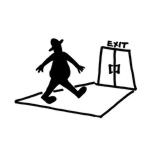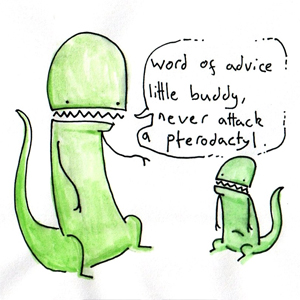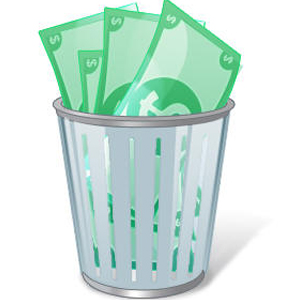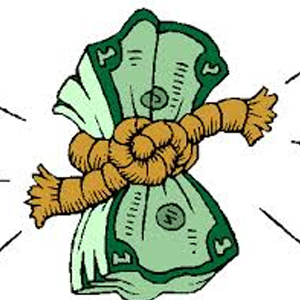 There is nothing more amazing to me than price objections. Yet for some reason we always encounter them. I don’t know why that is. Oh, probably because everyone wants to make a deal. Also we are becoming more and more conditioned to price shopping.
There is nothing more amazing to me than price objections. Yet for some reason we always encounter them. I don’t know why that is. Oh, probably because everyone wants to make a deal. Also we are becoming more and more conditioned to price shopping.
There are an ever expanding number of discount vendors in every strip of business. Look what you can get done on Fiverr.com, look at Ikea, all the chains selling discount anything and everything. This behaviour is common with governments – contracts awarded to the lowest bidder. Build a bridge that is going to last for 100 years – who’s the cheapest?
So it is understandable that when faced with making major investment decisions, most people start to wonder what they can do to cut the costs.
There will always and I mean always be someone willing to do it for less. The question you need to be asking is what are they cutting out in order to cut the cost. Is it quality, performance or what else could they cut out?
What is always missing in this conversation is the value of what is being done. What is the return you are going to get from buying?
That may sound obtuse but in the end it is about return and not percentage returns, but gross returns. You can’t bank a percentage, only hard dollars. Invest to make money, not for the best possible ROI.
While we are being conditioned to look for a better deal all the time, we usually mistake ‘better deal’ with ‘cheaper.’ When in fact it is never about that at all.
When we spend money in business we are looking at how much more we can get back, not how much it costs us in the first place.
If I told you to write me a cheque for $11,000 and I could show you how to make an extra $60,000 per year would that be a good deal?
What if I said if you do a newsletter with us, it will cost you a little more than if you have to do it yourself but that extra investment would help you realise $30,000 in additional profits, would that be a good deal?
It would. So stop worrying about the price of what your suppliers are charging and focus on the value return.
The dollar return is what matters, not getting the lowest possible price. It’s not how business people think.
 “The rich aren’t different from you or I…”
“The rich aren’t different from you or I…” The reason I hated my roof restoring business was the dread of knowing tomorrow I’ve got to get up and knock on enough doors to speak to 50 people about roof restorations. I knew if I did that I would be able to eat, if not then I would starve.
The reason I hated my roof restoring business was the dread of knowing tomorrow I’ve got to get up and knock on enough doors to speak to 50 people about roof restorations. I knew if I did that I would be able to eat, if not then I would starve. Referrals are tricky, one way or another they are always tricky.
Referrals are tricky, one way or another they are always tricky. I hope none of you have a business as badly conceived as my first business – selling roof restorations. It is nothing more than a gigantic churn-a-thon.
I hope none of you have a business as badly conceived as my first business – selling roof restorations. It is nothing more than a gigantic churn-a-thon. This past month has been a real challenge for me. My pregnant girlfriend Hollie has been in and out of hospital with a Kidney infection. Hollie’s pregnancy has been a rough one, It’s left me with a list of tasks longer than I’d care to admit. On top of working full time trying to grow this business, I’m the full time parent, I’m cooking, cleaning, washing folding, dropping kids and school and driving Hollie around from appointment to appointment. On top of that I have my fortnightly toastmaster meetings, I have weekly landmark seminars, I’m currently organising a large charity event and I am currently on a health kick and pretty intense exercise regime… Life has just been busy!
This past month has been a real challenge for me. My pregnant girlfriend Hollie has been in and out of hospital with a Kidney infection. Hollie’s pregnancy has been a rough one, It’s left me with a list of tasks longer than I’d care to admit. On top of working full time trying to grow this business, I’m the full time parent, I’m cooking, cleaning, washing folding, dropping kids and school and driving Hollie around from appointment to appointment. On top of that I have my fortnightly toastmaster meetings, I have weekly landmark seminars, I’m currently organising a large charity event and I am currently on a health kick and pretty intense exercise regime… Life has just been busy! I was speaking at a seminar a while back. It went quite well. Got some good leads out of it. Which isn’t really the point about the story. But none the less I am new to the world of professional speaking and so getting leads was a real buzz.
I was speaking at a seminar a while back. It went quite well. Got some good leads out of it. Which isn’t really the point about the story. But none the less I am new to the world of professional speaking and so getting leads was a real buzz. I Wish I Was A
I Wish I Was A  In the business owners guide to getting more repeat business and referrals, Ben and I talk about churn:
In the business owners guide to getting more repeat business and referrals, Ben and I talk about churn: After doing an existing customer opportunity audit with a potential client I got a rather interesting reply.
After doing an existing customer opportunity audit with a potential client I got a rather interesting reply.